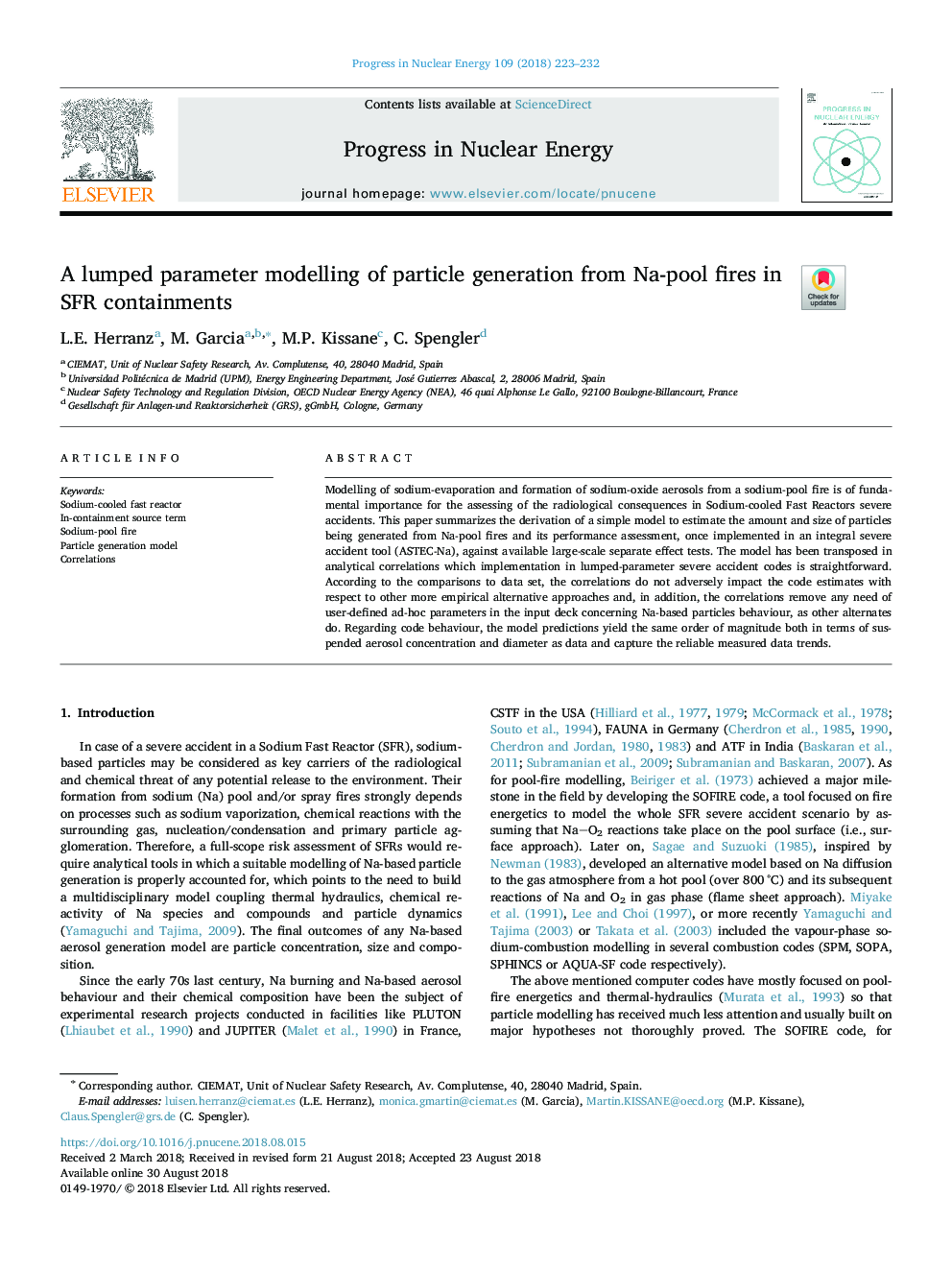| Article ID | Journal | Published Year | Pages | File Type |
|---|---|---|---|---|
| 11007427 | Progress in Nuclear Energy | 2018 | 10 Pages |
Abstract
Modelling of sodium-evaporation and formation of sodium-oxide aerosols from a sodium-pool fire is of fundamental importance for the assessing of the radiological consequences in Sodium-cooled Fast Reactors severe accidents. This paper summarizes the derivation of a simple model to estimate the amount and size of particles being generated from Na-pool fires and its performance assessment, once implemented in an integral severe accident tool (ASTEC-Na), against available large-scale separate effect tests. The model has been transposed in analytical correlations which implementation in lumped-parameter severe accident codes is straightforward. According to the comparisons to data set, the correlations do not adversely impact the code estimates with respect to other more empirical alternative approaches and, in addition, the correlations remove any need of user-defined ad-hoc parameters in the input deck concerning Na-based particles behaviour, as other alternates do. Regarding code behaviour, the model predictions yield the same order of magnitude both in terms of suspended aerosol concentration and diameter as data and capture the reliable measured data trends.
Related Topics
Physical Sciences and Engineering
Energy
Energy Engineering and Power Technology
Authors
L.E. Herranz, M. Garcia, M.P. Kissane, C. Spengler,
